For Charles Duggan, Dublin City Council’s heritage officer, the publication of More Than Concrete Blocks: Volume 3 marks the end of an “epic journey” over the past 12 years in documenting Dublin’s 20th-century architecture and recognising the breadth and depth of this legacy – with the avowed aim of changing negative public perceptions of its value.
The architecture of every century that passes tends to be rubbished in the century that follows. Thus the Victorians abandoned the repetitive formality of Georgian terraces in favour of a more eclectic approach that included Gothic revival, Scots baronial and Tudorbethan. In turn, 20th-century modernism rejected all of that for “the shock of the new”.
Many people didn’t like what it produced, from the tower blocks of Ballymun to the former Central Bank of Ireland on Dame Street. The latter required getting rid of a fine assembly of Georgian and Victorian buildings to make way for Sam Stephenson’s top-hung office floors floating above a pedestrian plaza that doubled as a roof for two levels of basement car parking.
Bestriding its surroundings like a colossus, the Central Bank was Stephenson’s magnum opus and, indeed, his masterpiece. It was also conceived at a time when an entire city block to the west, between Fownes Street and Eustace Street, was to be demolished to make way for an underground transportation centre, topped by offices, hotels and shopping malls.
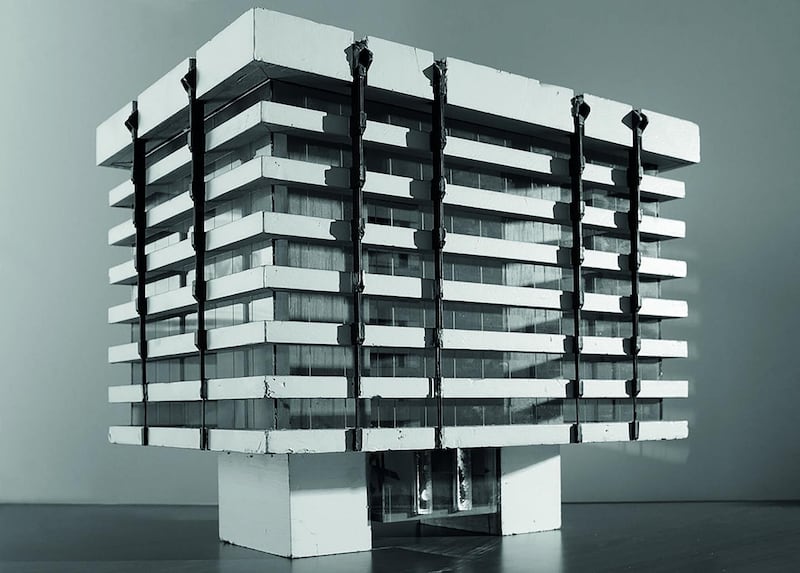
The former Central Bank, now being reimagined (very slowly) by Hines and Peterson Group as “Central Plaza”, is one of 31 case studies in the latest volume of More Than Concrete Blocks of the most remarkable buildings completed in Dublin between 1973 and 1999, the period it covers, along with introductory essays on each decade by Ellen Rowley, Carole Pollard and Merlo Kelly.
Architecture cannot be divorced from the social context in which it is produced, and that’s certainly true of the period in question, when Ireland moved from the relative optimism of the early 1970s through the utterly bleak 1980s (with many young architects having to seek work abroad) before the economy picked up in the 1990s and gave birth to the “Celtic Tiger”.
The stand-out case study – described by Dr Edward McParland as an absolute page-turner – is Rowley’s account of how the Papal Cross was designed, produced and erected in the Phoenix Park’s “Fifteen Acres”, in just eight weeks from start to finish, as the focal point of Pope John Paul II’s celebration of Mass for 1.3 million people on September 29th, 1979.
The soaring 35-metre white steel cross, set on a grassy mound, is all that remains of an entire landscape designed by Ronnie Tallon that also included 60 flapping banners, a long altar, a tiered podium, canopies (in case of rain) and an underground robing chamber for the pope. It was nothing less than an “outdoor cathedral”, consciously designed as a total work of art.
Some time after The Irish Times reported in February 1980 that no decision had been made by the Office of Public Works on whether the Papal Cross would be retained, Tallon made representations to Charles J Haughey, the taoiseach at the time, who immediately phoned the OPW’s chairman to tell him it was to stay. This postscript doesn’t appear in the book, however.
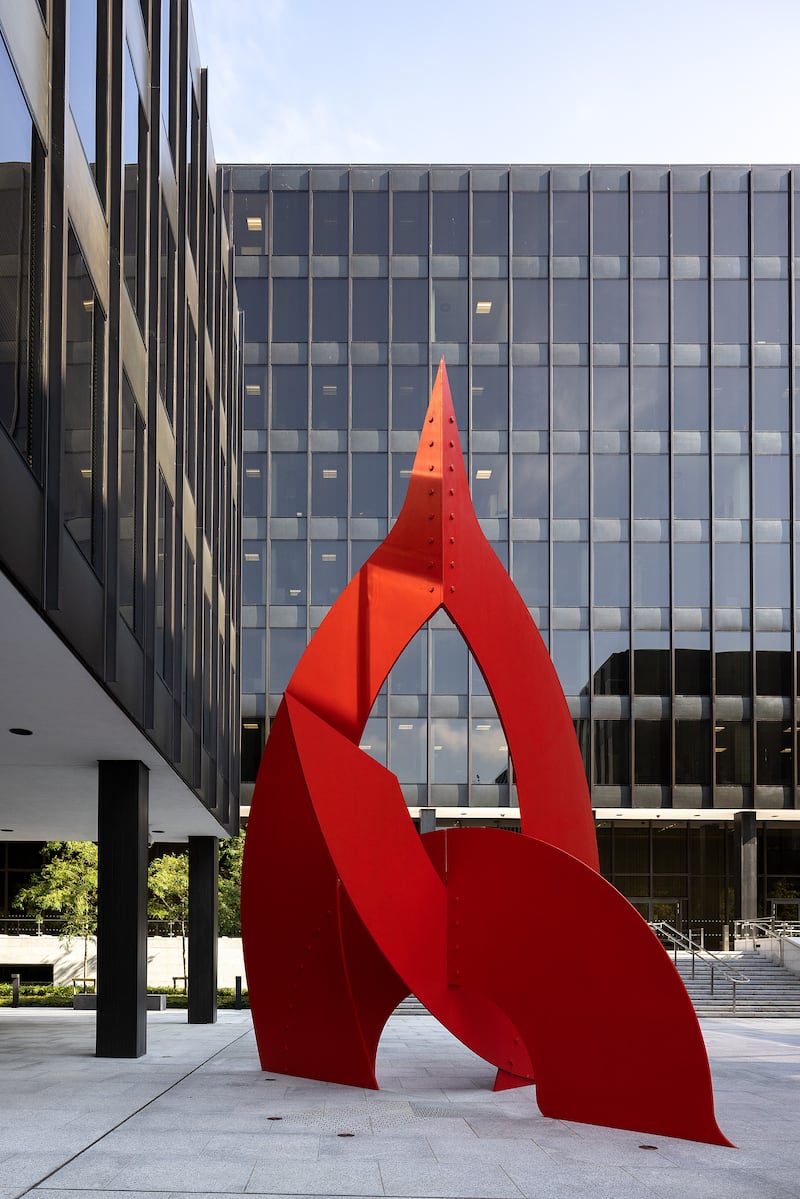
Tallon was also the architect of Bank of Ireland’s headquarters on Lower Baggot Street, which was completed in two phases between 1972 and 1978. Inspired by the design, if not the scale, of Ludwig Mies van der Rohe’s Seagram Building, in New York City, Tallon used the same material – Delta manganese bronze – for its facades, which were also similarly articulated.
It was almost as if he had taken the Seagram building and redistributed it in three blocks – four, five and eight storeys in height, arranged around two plazas – to produce what Pollard describes as “a taut and restrained modernist insertion into Dublin’s sober Georgian streetscape”. Indeed, it was added to the Record of Protected Structures more than a decade ago.
Long recognised as one of Dublin’s finest modern office buildings, it has since been thoroughly renovated by Scott Tallon Walker for its new owner, Larry Goodman, and renamed Miesian Plaza. One of the crucial factors that made this feasible was Tallon’s decision to opt for bigger floor-to-floor heights, thereby having the capacity to accommodate 21st-century services.
Sadly, AIB Bankcentre in Ballsbridge didn’t get a second life. Designed by Andy Devane, it “brought a vision of corporate America to Dublin” in 1980, as Pollard says, with a campus-style layout of office blocks “arranged as a series of pavilions ... draped with trailing vines and sitting on manicured lawns”. Inevitably, it was dubbed the hanging gardens of Ballsbridge.
An expert on Devane’s work, she hails Bankcentre as “an eloquent counterpoint to the prolific mundanity of office blocks” in Dublin 4. On a site previously occupied by the RDS paddocks, the new corporate campus in its parkland setting was intended to “make an appropriate statement about AIB’s ambitions” and “appeal to its growing international client base”.
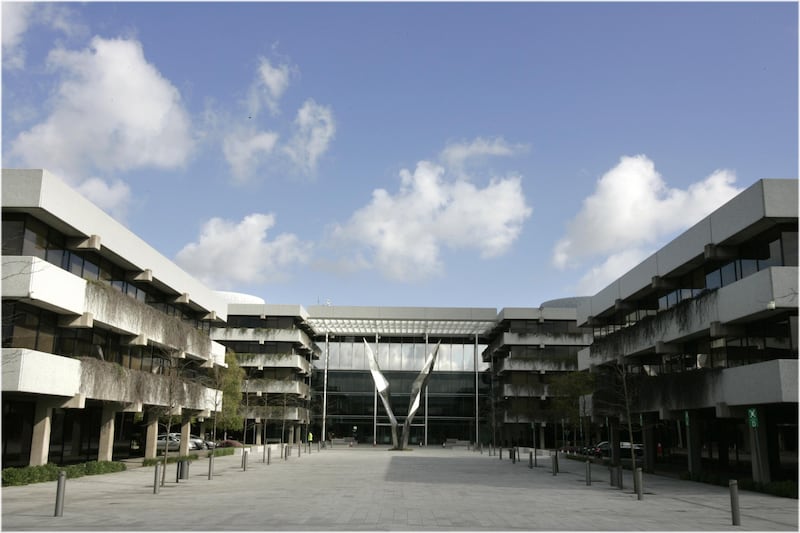
Devane had studied under the legendary Frank Lloyd Wright and was influenced by his ideas about “organic architecture”, so there was a humane aspect to Bankcentre: employees “enjoyed naturally lit office spaces and pleasant green vistas from their desks” – at least until the lawns and linear pool on its central pedestrian boulevard were removed in 2008.
It all came to a sad end after permission was granted to the Ronan Group – unaccountably not named in the book – to demolish Devane’s buildings and, apart from two remnants, replace the lot with a higher-density office development called Fibonacci Square, designed by the prolific Henry J Lyons Architects. Facebook/Meta then made the mistake of letting it for 25 years.
Devane was also the architect of Irish Life Assurance Company’s headquarters on Lower Abbey Street – a pioneering development in the north inner city in its day, built on the site of Brooks Thomas builders’ providers and timber yard. Apart from offices, it had a shopping mall (sacrificed for a Lidl supermarket in 2021) and two discreetly located blocks of apartments.
Pollard correctly identifies it as “the first large-scale redevelopment north of the River Liffey since the Georgian period”. But her case study doesn’t mention that the scheme was actually conceived as “a citadel within the city”, fronted by a dry moat and two retractable drawbridges. That’s only noted in a brief entry in the outline survey towards the end of the book.
This guidebook-style survey, with pen-pictures of 136 buildings, is offered not as the “best of” architecture from the period 1973 to 1999 but as “a representation of the types and forms of buildings which were designed, made and inhabited in Dublin city at the time”. It even includes such horrors as Castle House and Wicklow House, on South Great George’s Street.
Outstanding conservation projects involving historic buildings are also recognised, not least de Blacam and Meagher Architects’ restoration of Trinity College Dublin’s dining hall after a disastrous fire in 1984. They not only faithfully restored the mid-18th-century hall itself but replanned the building to include a galleried timber atrium and an exclusive bar for college staff.
As Aoife O’Halloran writes, the programme merely required a “drinks cabinet” for the senior common room, but the architects went much further by re-creating Adolf Loos’s jewel-box American Bar in Vienna (1908), using cheaper materials such as plywood for the wall panels and painted MDF, rather than marble, for the coffered ceilings. It is simply marvellous.
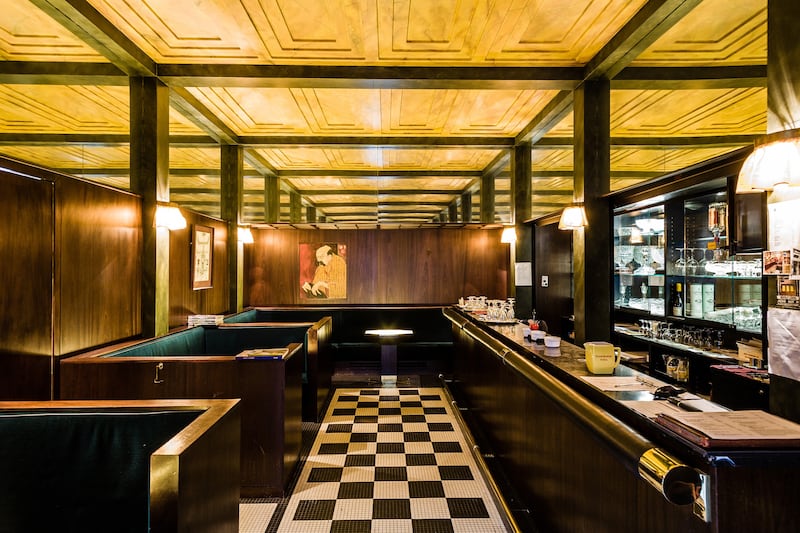
Another featured Trinity project is Grafton Architects’ 1996 engineering laboratory, housed in a basalt-clad cube that’s “playfully juxtaposed against the solemn 19th-century Parsons Building”, as Merlo Kelly writes. Dublin Corporation’s planners would have preferred Portland stone cladding until they were presented with samples of basalt in a “paler shade of black”.
The book also includes case studies of de Blacam and Meagher’s terrace of six modernist, light-filled houses at Herbert Mews in Ballsbridge (1979) and Tony Horan’s “elegant and urbane” Willow Field housing scheme in Sandymount (1984), for which the target market was a new demographic of young single women who had just qualified to get mortgages for the first time.
Public housing projects that made the grade include Fitzgibbon Court, the last of Dublin Corporation’s five-storey maisonette blocks; the suburban-scale terraced houses at City Quay that surprisingly won an RIAI silver medal for housing; the community-driven Ash Grove infill scheme in the Liberties, and the low-rise, high-density Darndale estate in north Dublin.
It’s also great to see the sterling work of Gerry Cahill celebrated by Rowley’s case study of Stanhope Green – an early collaboration with Sr Stanislaus Kennedy, founder of Focus Ireland – which involved transforming a redundant Sisters of Charity convent off Stoneybatter into social housing. It’s still a “quietly thriving residential community” more than 30 years later.


O’Donnell + Tuomey are deservedly recognised for the Children Court in Smithfield (1987), a rare example in Dublin of postmodern architecture; Ranelagh Multi-Denominational School (1995), which was “keenly attuned to both its surroundings and its users’ needs”; and, of course, the Irish Film Institute (1992), ingeniously installed in a former Quaker meeting house.
A whole section of the book is devoted to Temple Bar, which catapulted Dublin into the first rank of urbanism worldwide on the strength and ambition of its 1991 architectural framework plan. Drawn up by Group 91, a consortium of eight relatively youthful architectural practices, it offered a clear and compelling vision of the future for a chunk of the city centre.
Featured projects include Meeting House Square, by Paul Keogh Architects. Sadly, it was left marooned by the realignment of a pedestrian bridge on the axis of Eustace Street and later by the demise of Eden, a trendy restaurant whose entrance is now caked with graffiti, and then disfigured in 2013 by the installation of four upturned “umbrellas” that require regular maintenance.
McCullough Mulvin Architects’ emblematic Temple Bar Gallery & Studios retained, enlarged and embellished the concrete frame of a factory that stood on the site, stretching it to the corner of Fownes Street to produce a “a gridded block of white, black metal and glass – almost like an exploded Piet Mondrian painting”, as Rowley enthuses in her case study.
Group 91′s vision for Temple Bar of creating “a community of 3,000 citizens living in the city” was never achieved, even before its housing stock was decimated by Airbnb-style short lets. Regrettably, Derek Tynan’s Printworks scheme on Temple Lane – a model of urban living with apartments arranged around a courtyard at first-floor level – has also fallen prey to this trend.
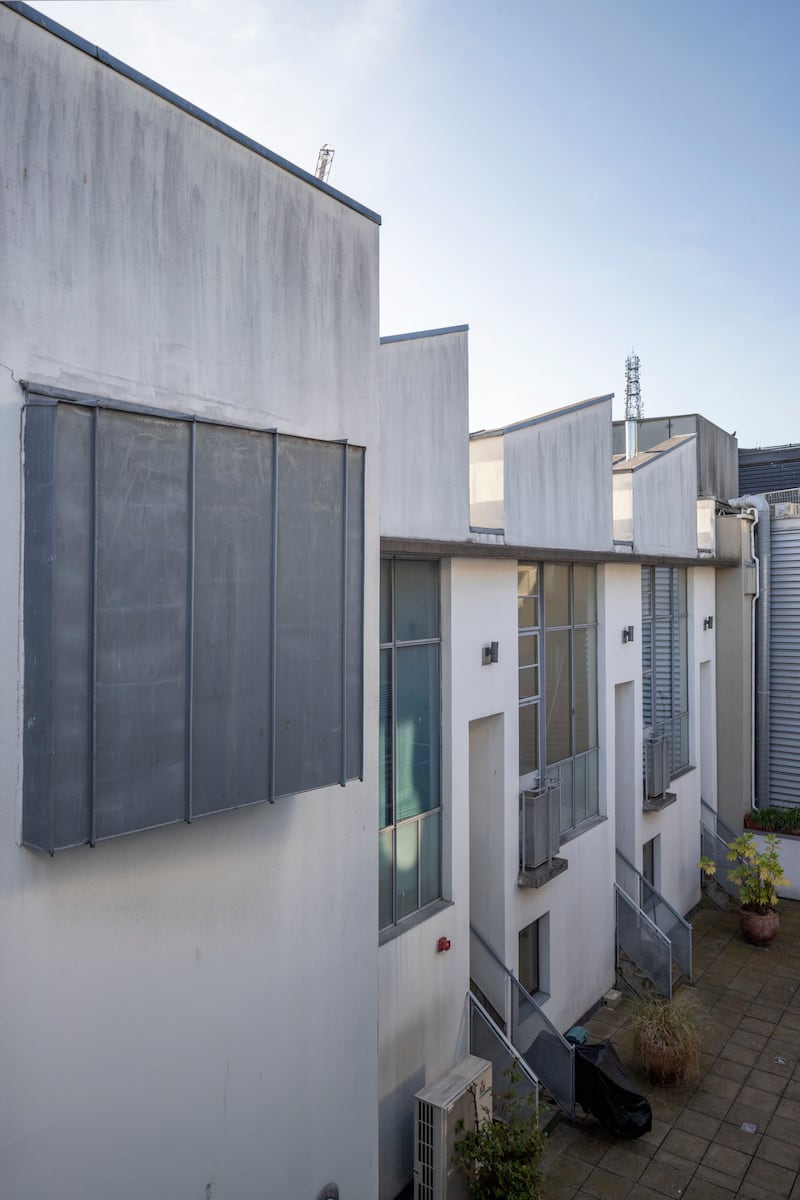
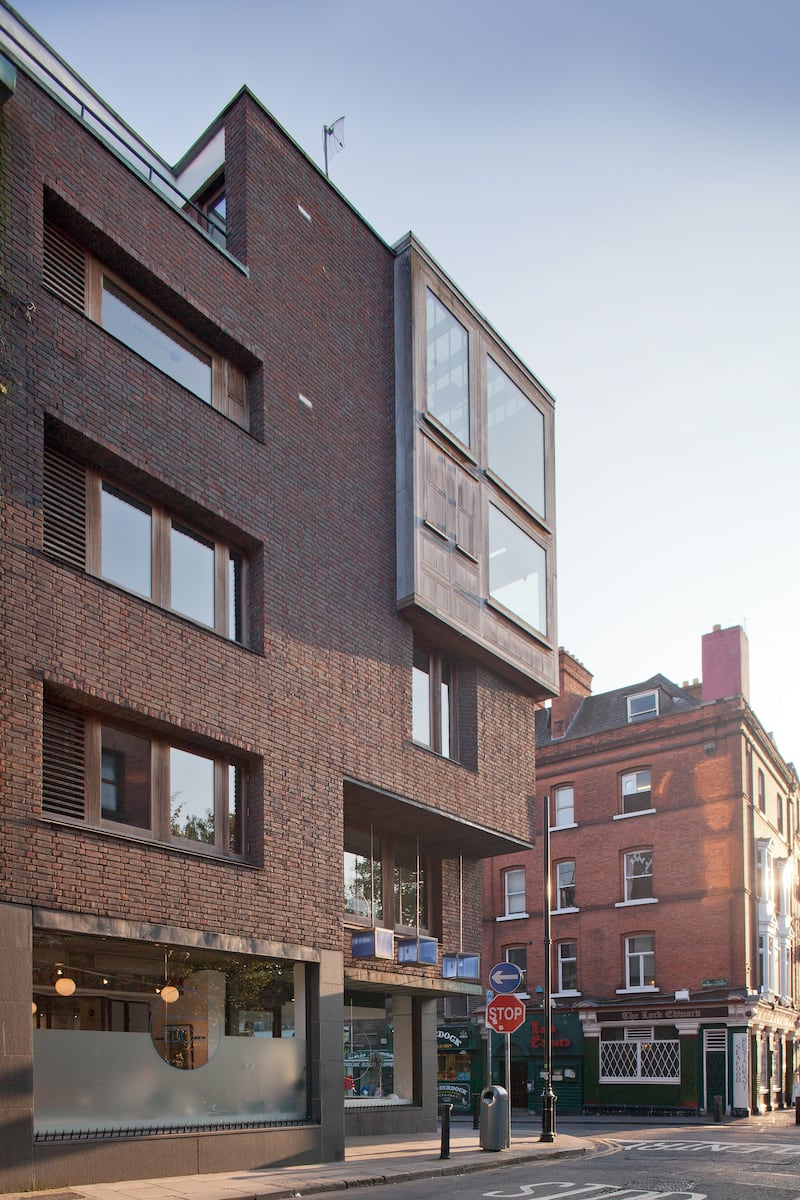
Other featured buildings from the 1990s include the British embassy on Merrion Road, designed by the London-based Allies and Morrison with security considerations in mind, and 1 Castle Street, by de Blacam and Meagher; it originally included a spectacular party flat with a double-height projecting timber-and-glass box but is now given over entirely to office use.
More Than Concrete Blocks Volume 3 is a chunky book, running to 512 pages, so it inevitably contains some errors. Quoted population statistics for the inner city are wildly inaccurate, with figures for the city centre alone said to have risen “from 916,000 in 1990 to 980,000 in 1999″. These numbers, culled from macrotrends.net, refer to the entire Dublin metropolitan area.
Prof Michelle Norris notes in the foreword that several featured buildings have already been “demolished or reworked so radically that they are unrecognisable”. Apart from Bankcentre in Ballsbridge, these include Stephenson Gibney’s Molyneaux House, on Bride Street, of which only the “discombobulated” brick front survives, and the Treasury Building on Grand Canal Street.
The task now facing Charles Duggan and everyone else involved in this monumental project is to persuade members of Dublin City Council and its senior officials that many more fine examples of 20th-century architecture in the city must be added to the council’s Record of Protected Structures before they fall to the wrecking ball, along with all of their embodied carbon.
More Than Concrete Blocks: Dublin City’s Twentieth-Century Buildings and Their Stories: Volume 3 – 1973-1999 is published by UCD Press











